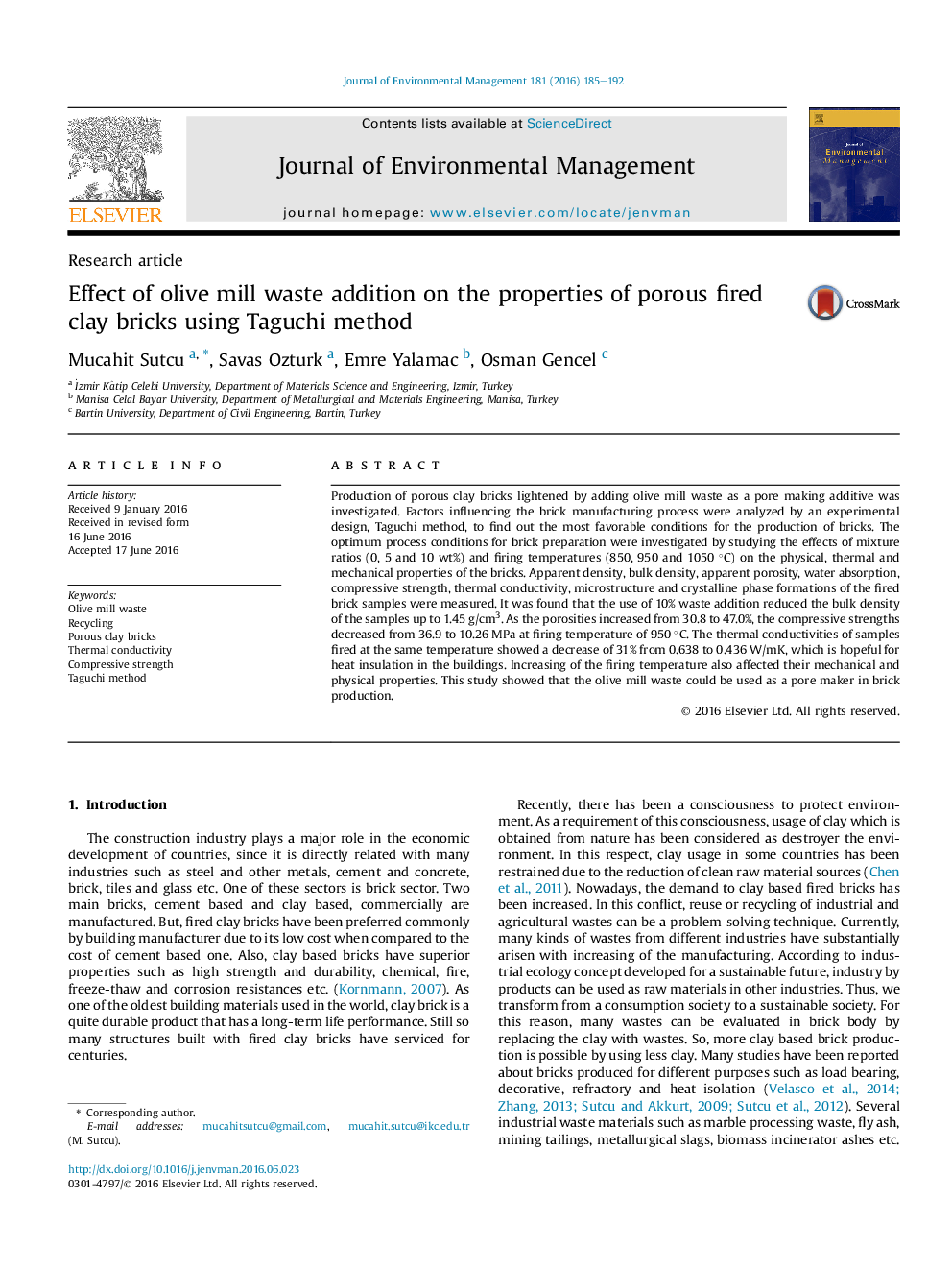| Article ID | Journal | Published Year | Pages | File Type |
|---|---|---|---|---|
| 7479504 | Journal of Environmental Management | 2016 | 8 Pages |
Abstract
Production of porous clay bricks lightened by adding olive mill waste as a pore making additive was investigated. Factors influencing the brick manufacturing process were analyzed by an experimental design, Taguchi method, to find out the most favorable conditions for the production of bricks. The optimum process conditions for brick preparation were investigated by studying the effects of mixture ratios (0, 5 and 10 wt%) and firing temperatures (850, 950 and 1050 °C) on the physical, thermal and mechanical properties of the bricks. Apparent density, bulk density, apparent porosity, water absorption, compressive strength, thermal conductivity, microstructure and crystalline phase formations of the fired brick samples were measured. It was found that the use of 10% waste addition reduced the bulk density of the samples up to 1.45 g/cm3. As the porosities increased from 30.8 to 47.0%, the compressive strengths decreased from 36.9 to 10.26 MPa at firing temperature of 950 °C. The thermal conductivities of samples fired at the same temperature showed a decrease of 31% from 0.638 to 0.436 W/mK, which is hopeful for heat insulation in the buildings. Increasing of the firing temperature also affected their mechanical and physical properties. This study showed that the olive mill waste could be used as a pore maker in brick production.
Related Topics
Physical Sciences and Engineering
Energy
Renewable Energy, Sustainability and the Environment
Authors
Mucahit Sutcu, Savas Ozturk, Emre Yalamac, Osman Gencel,
